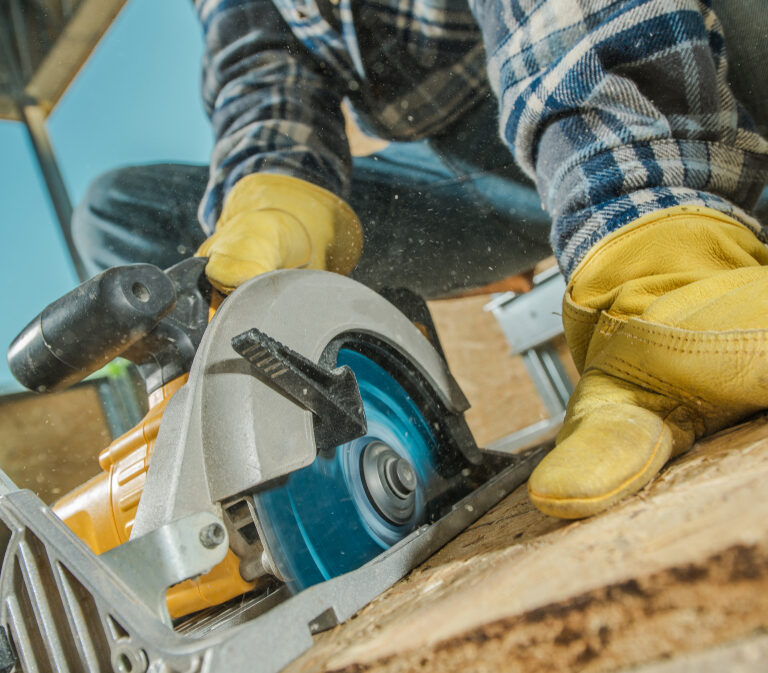This won’t come as a surprise to anyone that has ever set foot into a hardware store, but there are a lot of saws out there. Some saws cut lengthwise, some saws cut across, some saws cut iron, some cut wood, and so on.
In this article, we’re going to talk about 20 different saws and what you should use them for. Companies are always innovating, old technologies are always being rediscovered, and there are already thousands of different types, so this isn’t a complete list. It’s not possible to cover them all. We will try to cover the most popular styles, though, so you can get a good idea of what you need for your next project.
Types of Saws
To make it easier, we separated the 20 types into four categories.
Saws that require no electricity are simply called hand saws. They are usually inexpensive but often require a bit of practice to use effectively. However, anyone who works with wood should have at least a small hand saw for doing simple tasks like cutting off dowels or getting the last bit of connection sliced when doing complicated cuts, even if it’s not your main saw.
Portable, handheld saws that are powered are perfect for job sites and smaller workshops. They plug in with a cord, or they use large batteries. It used to be that corded power tools were necessary for larger jobs, but modern battery technology is more than adequate to handle almost anything.
Larger bench and shop saws are for use in a workshop or other more demanding applications. There are portable versions of many bench saws. However, the more accurate and powerful saws will all require a lot of power, and will be very difficult to move around. Some of these saws, like the panel saw, will only be found in larger furniture shops or lumber yards.
Many saws only exist to do one task very well. These specialty saws are often expensive, require special training, or only work in very specific situations. This category probably has the largest number of entries. If you can think of a task where cutting is useful, there is a saw for it. There are even meat saws for butchers and fabric saws for seamstresses; it’s an endless category. We will touch on five of them, but it’s only a very small sample of what’s out there.
Hand Saws
When choosing a hand saw, it’s important to remember that the saw blades themselves are often for specific tasks. A backsaw can have a crosscut, rip, or combo blade, and a hacksaw can have a huge variety of blades for different materials.
Hand, Miter, or Backsaw
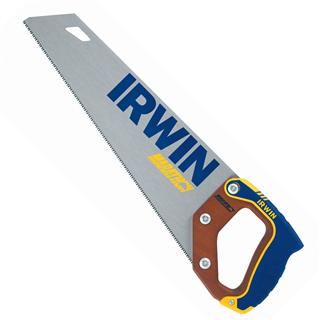
A backsaw is probably the simplest saw that exists, and it’s what most people picture when they picture a hand saw. They are probably the most intuitive type of saw to use: all you have to do is press the teeth against the surface and make a sawing motion.
Backsaws are usually push-saws or push/pull saws. They cut when you are pushing forward, or they cut in both directions. It’s rare to find a backsaw that cuts on the draw.
When to Use
The hand saw is the most general-purpose saw that exists. It can cut anything; you just have to be willing to put in the work to do it. Most people will use hand saws for small projects or as a backup for when battery power runs low in our modern era.
Japanese or Pull Saw
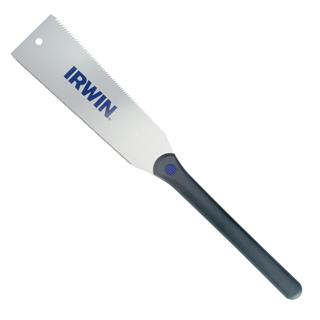
Unlike a backsaw, a pull saw cuts as you pull it towards you. The style is very commonly found in Japanese-style saws, which leads to many people simply referring to pull saws as “Japan saws.”
A very common style of Japan saw is the double-edged draw saw. One side has coarse teeth for ripping (cutting with the grain), and the other side has lots of finer teeth for crosscutting (cutting across the grain). They are usually smaller because they are more suited for delicate work.
When to Use
Pull saws are usually used for more precise cuts like the kind needed for dovetails or other fancy joints. Furniture and cabinet makers will often carry them as finishing saws since they are gentler and more precise than a jigsaw.
Hacksaw
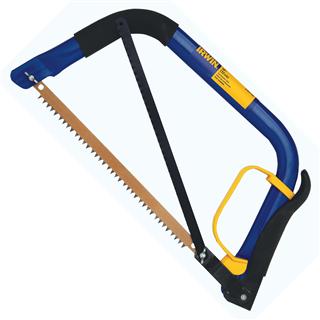
A hacksaw is a type of frame saw, which simply means an independent frame that holds the blade. The biggest advantage of a frame saw is that you can make deep cuts without needing a very wide blade.
Since hacksaws have replaceable blades, they are used for a large variety of things. It’s not uncommon to find hacksaws with very fine metal cutting blades at a machine shop, then find the same frame with a very aggressive blade for cutting PVC and ABS.
When to Use
The versatility of a hacksaw is unmatched, which is why you’ll find them in almost any setting. However, the average person will probably keep one around for occasional metal cutting. If you have to cut a bolt short, make a brass accent, or cut a small metal pipe, a hacksaw will probably be the saw you have on hand to do the job.
Jab Saw/Keyhole Saw/Wall Saw
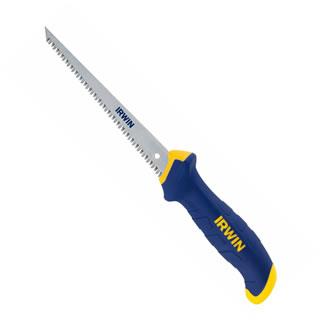
There are many small saws built in this same style, so it’s easy to lump them all together. Jab saws are generally small saws that taper down to a point so you can poke them into the material and make inscribed cuts.
A drywall saw is probably the most common type of jab saw. It has a very sharp point to be stabbed through drywall, and it has very aggressive teeth for ripping through the gypsum.
When to Use
If you work with drywall, these are essential for all the times you don’t want to get a high-powered Rotozip out, or when you just need to do a few minor cuts. Otherwise, this style of saw has been largely replaced by oscillating multi-tools and rotary tools.
Coping Saw
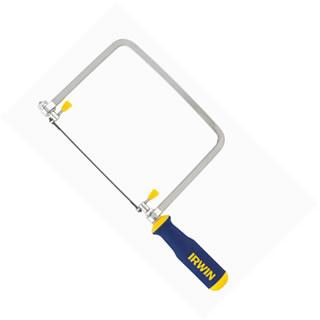
Coping saws cover a wide range of saws that are all for fine detail work. They are another type of frame saw, and they have a very thin blade that is perfect for making curved cuts and very high precision cuts.
Jewelers saws are a type of coping saw that is adjustable for different blade lengths, and some coping saws like a fretting saw have very deep throats that allow you to work with the blade when it’s inside the object you are cutting. Some special blades can cut in all directions.
When to Use
The modern scroll saw has replaced coping saws as the main tool for detail work, but the coping saw still has a place in most workshops for use when there is a low volume of work to be done. They are also very useful as a companion to the pull saws when making dovetails or other joints because they can get in and clean up the areas that the wide pull saw can’t reach.
Handheld Power Saws
Modern battery-powered saws are powerful, capable, and can often last all day without needing a new charge. However, cheaper plug-in versions still exist and can be an excellent value if you don’t need the extra portability.
Circular Saw
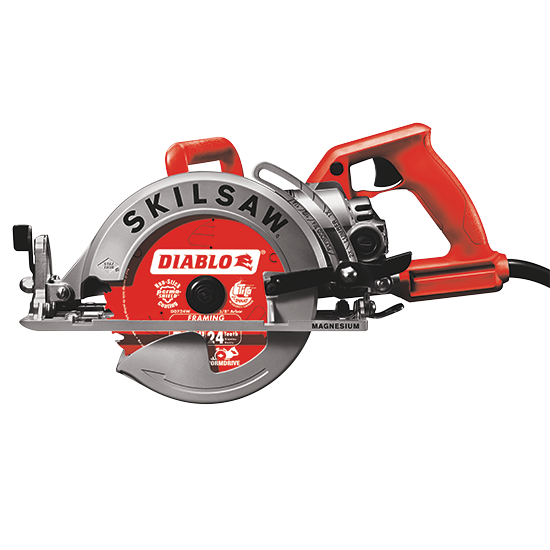
The circular saw is probably the most common power saw in existence. It’s often called a “Skill Saw” after the most famous manufacturer of circular saws, Skilsaw, and you can’t go to a construction site without seeing at least a couple of them laying around.
There are two main styles of a circular saw. The direct-drive circular saw is just a motor with a blade attached to it. Inexpensive circular saws are usually this style. Beam saws, which have huge blades for cutting large pieces of timber, are also usually this style. The other style is called worm drive. Worm drive saws are a bit easier to use and often have more power because they can utilize gearing to change speeds.
When to Use
Anytime you need to cut a straight line in the field, a circular saw is probably the right tool. They can cut wood, brick, metal, and plastic if you put the right blade on them, and you can make cuts that are as long as you could ever need if you set up a fence.
Jigsaw
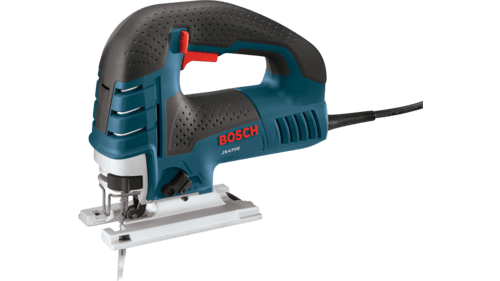
Jigsaws use a small blade that can easily curve and make precision cuts. The blade can punch through the material for inscribed cuts, and since it’s exposed on all sides except for one, you can use a jigsaw to make very freeform cuts.
The jigsaw is probably the most common saw after the circular saw, and they are almost a necessary companion to the circular saw. When you cut into a piece with a skill saw, the blade’s round shape will leave just a little bit of material. Those cuts are easily cleaned with a jigsaw.
When to Use
If the circular saw is for every straight cut, the jigsaw is for every cut that isn’t straight. Making complicated puzzle piece cuts is the jigsaw’s primary domain, and like the circular saw, there is a blade for almost every situation you can imagine.
Reciprocating Saw
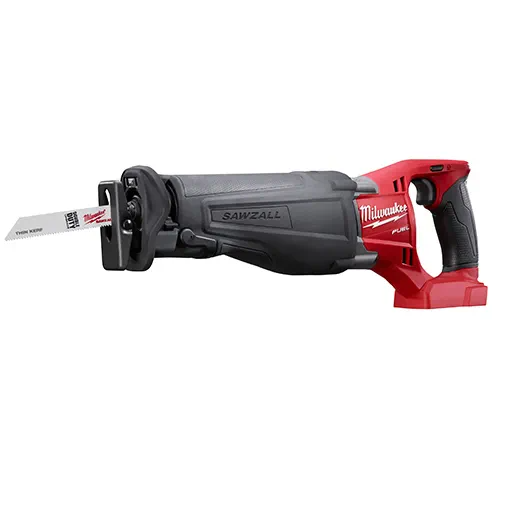
Reciprocating saws, often called “Sawzalls” after Milwaukee Tools popularized them, is an imprecise but powerful saw often used for demolition. The blades for a reciprocating saw are often designed for cutting multiple materials so that they can slice through entire assemblies with ease.
When to Use
Anytime you need to make quick cuts, a reciprocating saw is a good option. It’s common to use these saws as if they were giant, fast, and sloppy jigsaws to cut out holes in sheeting or quickly shape timber and metal. They are also perfect for reaching in and cutting things where other tools wouldn’t fit, like taking the top off a stud in a wall.
Oscillating Multi-Tool
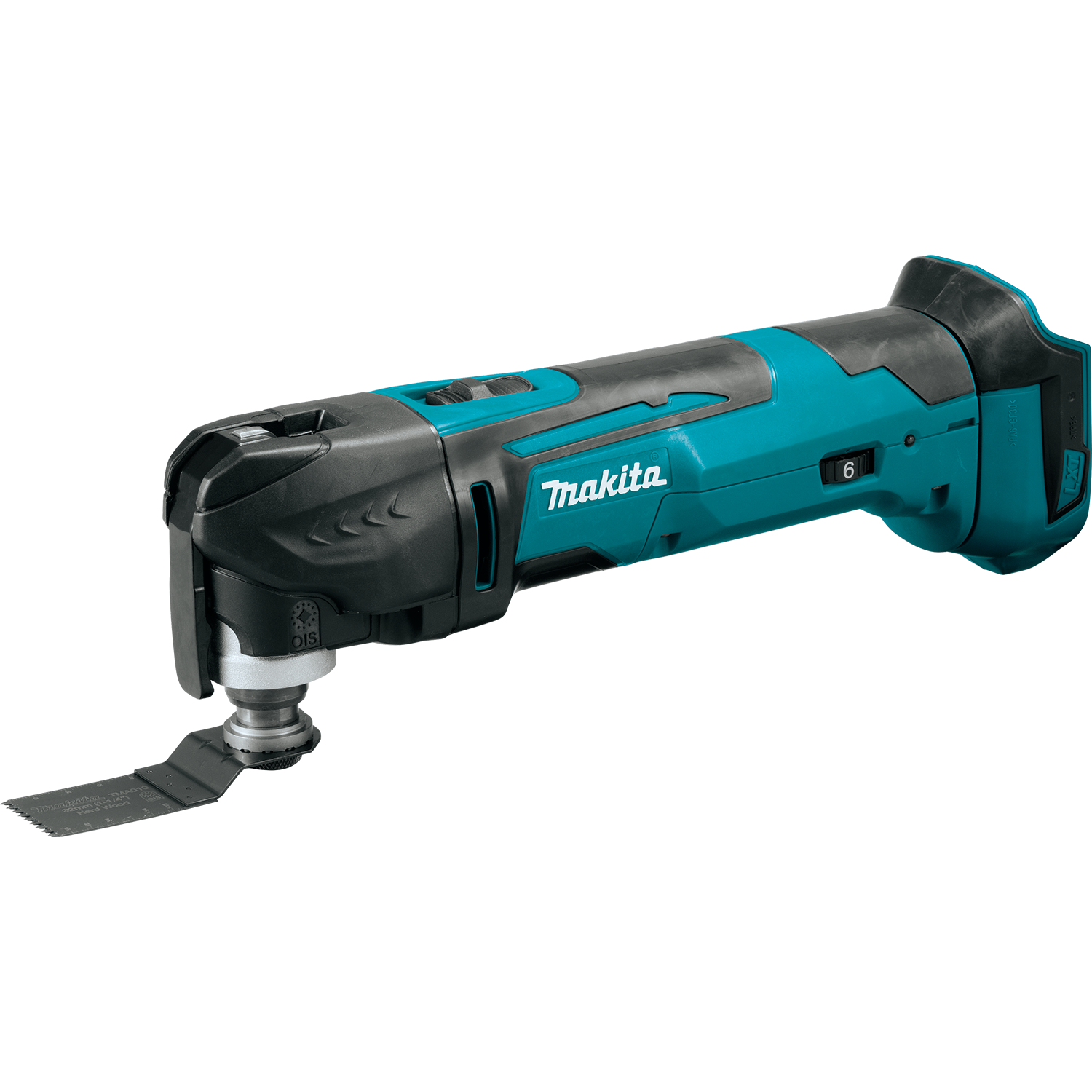
Multi-tools have quickly become a must-have tool for any DIYer because of the incredible versatility they offer. They can hold a very small blade capable of making very precise cuts, and they can hold large half-moon blades that can easily cut through drywall. Many have attachments that can turn them into sanders, power chisels, and other tools.
When to Use
On large job sites, these tools are usually considered backup tools. They are used when the larger dedicated tool can’t reach, or that tool got left behind on accident.
However, for the average small shop or hobbyist, the multi-tool is a perfect do-everything tool to have when you don’t want to buy a bunch of other tools. It may not be the best at all tasks, but it can do all tasks, making it invaluable.
Chainsaw
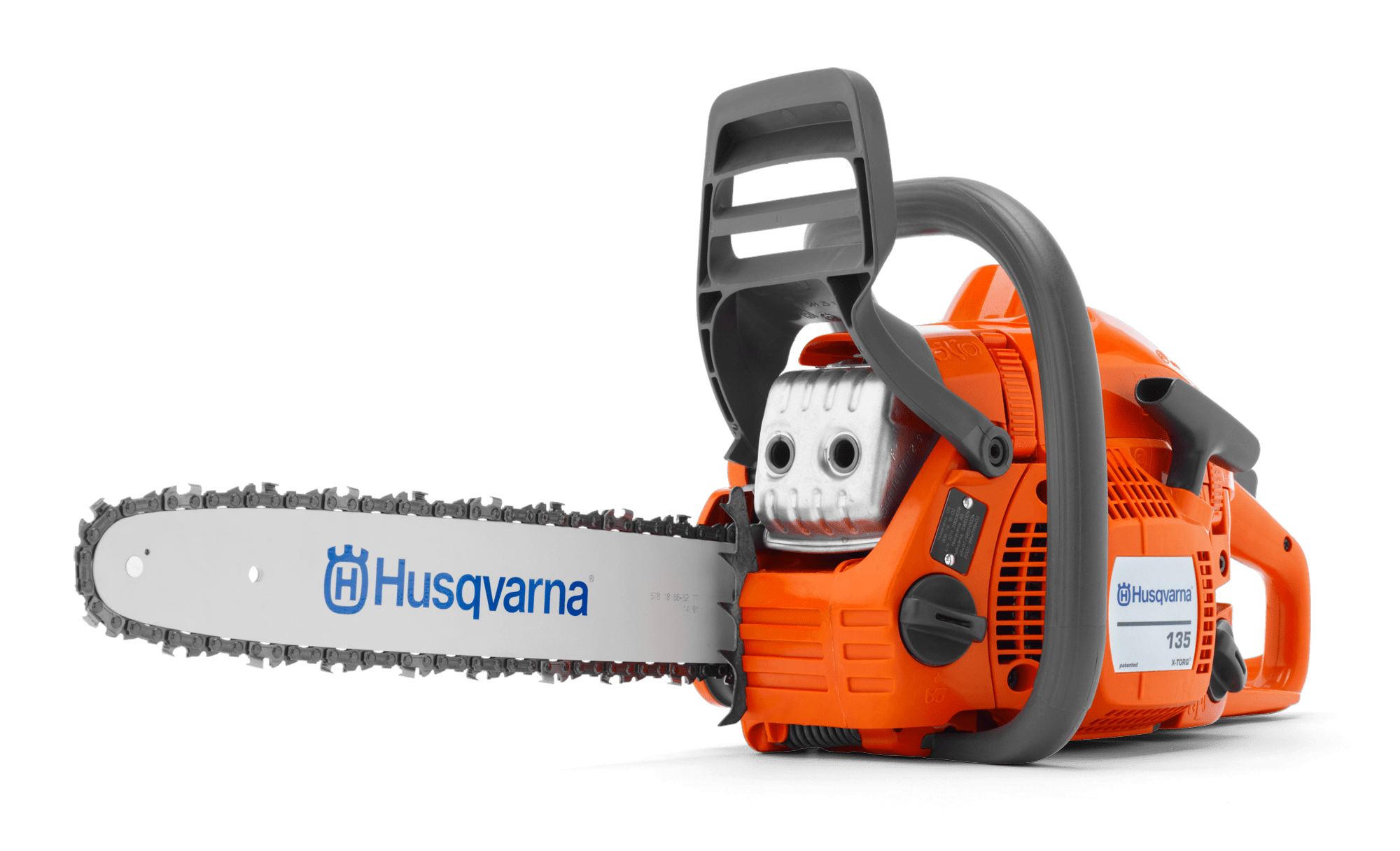
A chainsaw uses a chain that has teeth attached to it instead of a blade. They remove a lot of material very quickly and are perfect for making very large cuts. They are an indispensable part of a landscaper’s toolkit, but they are also used in construction for rough-cutting beams.
Most chainsaws are only meant to cut wood, but there are chainsaws for cutting brick and rebar. You’ll see those heavy-duty chainsaws used in search and rescue operations where precision takes a back seat to speed.
When to Use
Chainsaws are usually used to cut trees apart, so if you need to cut down a tree, a chainsaw is probably the best tool for the job. Just be sure to stay out of the way when it falls. Other uses for chainsaws include: carving bear statues, turning trees into planks, and competitive sports.
Bench and Shop Saws
Dedicated bench and shop saws often take up a lot of room and usually require a lot of power. However, they are usually faster, more precise, and much more durable than their smaller counterparts. Some tools, like band saws and table saws, do have portable versions as well.
Compound Miter Saw or Chop Saw
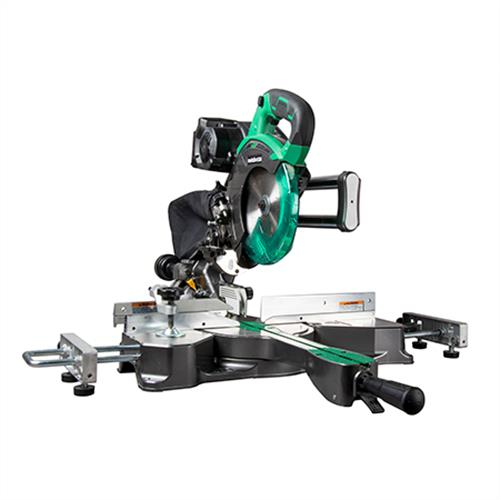
“Chop saws” come in a few different shapes and sizes. Generally, they have a powered circular blade that “chops” down into a bed. A compound miter saw is a chop saw that can cut compound angles meaning it can swivel and roll from side to side. A sliding miter saw can extend to cut much wider pieces than a standard miter saw.
These saws are used to cut material to length and to create angles. There are chop saws for metal, wood, and stone, and the blades are usually 8” or 10” in diameter. A bigger blade will allow you to cut thicker and wider materials but hinders their portability.
When to Use
Chop saws are often the workhorse tools of a shop, since almost all raw material needs to be cut to length before they can be used. They are also crucial for doing things that require complicated angles, like making picture frames or installing crown molding.
Table Saw
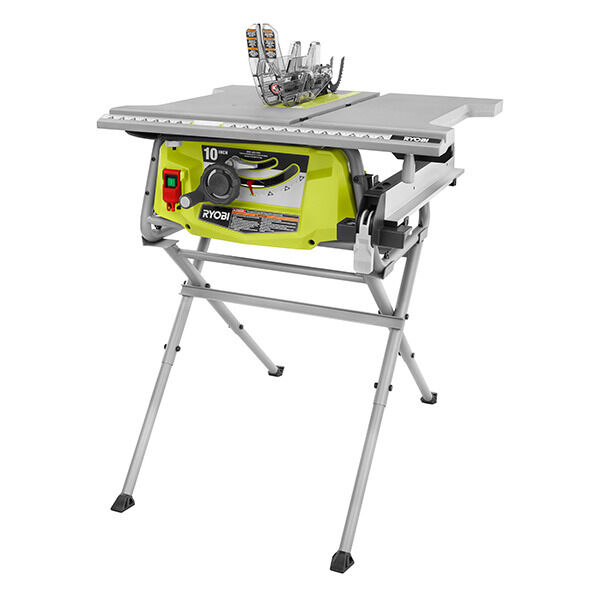
Table saws excel at ripping and making long, straight, precise lines. However, they are really much more versatile than that. There are tons of jigs and templates that can turn a table saw into a tool that can make any cut, including crosscuts, cove cuts, and dados/rabbets.
Most table saws are only suitable for wood, and they range in size between “fits in a large toolbox” to “takes up the entire footprint of the shop.”
When to Use
Everyone who works with wood should have a table saw, but people who work with plywoods will benefit from them especially. It’s nearly impossible to work with sheet goods and get precise cuts without a table to support the goods and a fence to guide them.
Band Saw
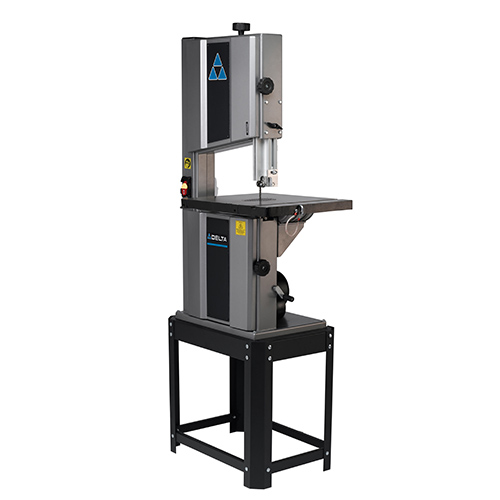
A band saw uses a metal band full of teeth instead of a circular blade. The rollers that hold the band can be some distance apart, which means that you cut a large variety of thicknesses and shapes without running into the machine itself. The bands can be changed to cut almost any material, but wood and metal tend to be the primary uses.
Band saws range greatly in size. Small portable band saws are perfect for cutting corbels and pipes in the field. Larger machines are used to cut fine details and patterns, and even larger machines are used to mill lumber into planks and resaw planks into specific sizes.
When to Use
If you have to make many free-form cuts or cut a very large variety of materials frequently, a band saw is a tool you want to have. It’s also the tool you need if you have to cut very large or awkwardly shaped objects.
Scroll Saw
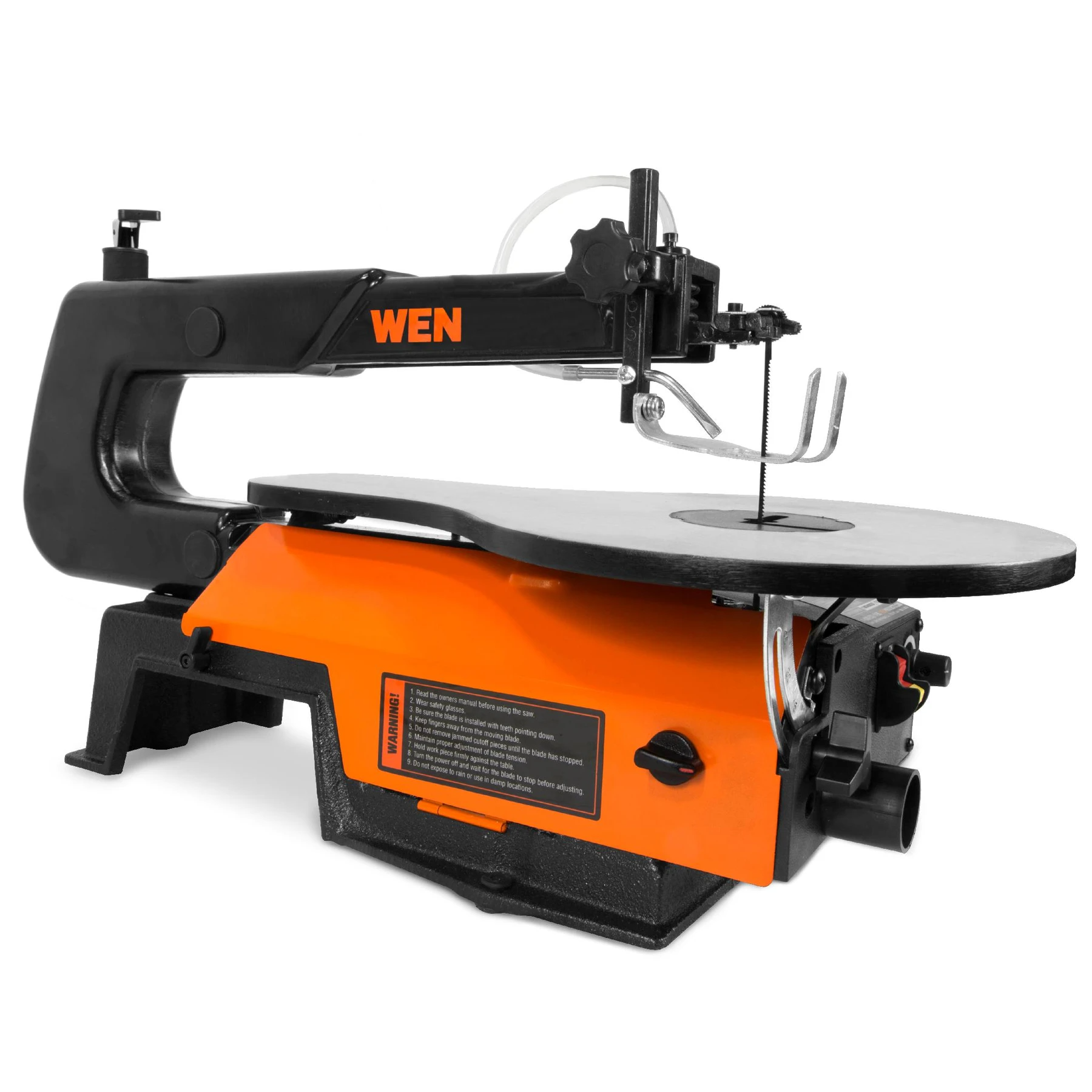
A scroll saw is basically a powered coping saw. They use a very fine, small blade that can cut with incredible precision and turn very sharp corners. One of the biggest features of a scroll saw is the ability to feed the blade through a hole in the material, allowing you to make interior cuts.
“Scroll” is actually a form of art that emphasizes spirals, circles, and intricate curved designs. The scroll saw is the tool used to make those designs out of wood and metal.
When to Use
Scroll saws are primarily used for ornamental details and art. Wood inlays, scroll art, and jewelry are all examples of scrollwork, so if you do that level of detail, you probably need a scroll saw.
Modern CNC and laser cutters have largely replaced the scroll saw in the larger shop and professional level because they can accurately reproduce the same shapes at many times the speed.
Panel Saw
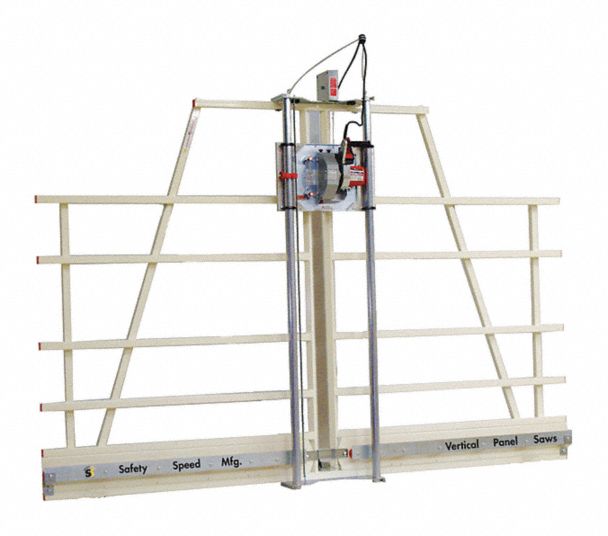
A panel saw resembles a circular saw strapped to a giant frame. They are used for cutting panels, like the name suggests, and can create very long and accurate straight cuts. They work by installing the panel into the frame, setting the saw’s height and direction, then moving the saw through the panel in a line.
When to Use
Panel saws used to be a staple of cabinet shops that need to work with large sheets of material, but they have been replaced by CNC machines. Now only small, low-volume shops use them. You can still find them in many lumber yards, though, where there is the need to quickly and accurately cut a few sheets for a customer.
Specialty Saws
As we said above, the number of specialty saws knows no boundaries. There is a saw for everything. The following are simply the ones you are most likely to come across in your day-to-day.
Tile Saw
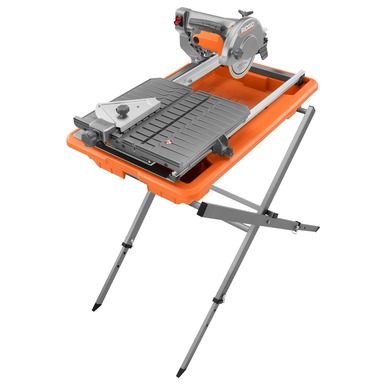
A tile saw uses an abrasive disc to cut tile. It sprays water onto the blade continuously to keep the blade cool and keep the dust down.
There are a few different styles of tile saw, but the most common style has a blade mounted above a sliding table. You hold the tile to the table and slide the table through the blade. The table can also be taken off so that the tile saw can be used more like a grinder.
When to Use
Tile saws are used for tile, so naturally you tend to use them when laying tile at volume. There are other methods for cutting tile if you are doing a small job and don’t want to fork out for a tile saw rental. They can also work well for other, similar materials like rock and concrete.
Hole Saw
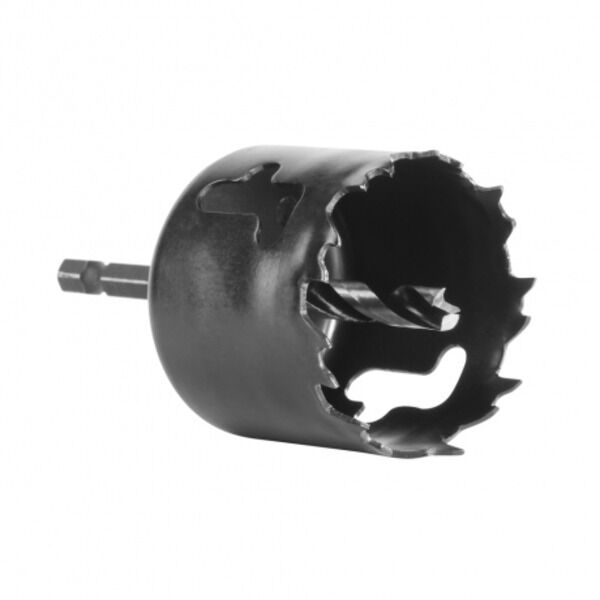
A hole saw consists of two parts. The arbor, which is the center of the hole saw, is a drill bit that starts the hole and keeps the saw centered. Modern hole saw arbors are often built to hold multiple sizes of saw and bit. Many feature quick-change options that make it easy to disassemble the saw for cleaning.
The second part of the hole saw is the cutting blade. It’s a cylinder with teeth, and it’s used to cut out a hole. Hole saws exist for almost any material, although their size is usually limited to less than three inches. Most are powered by a different tool, like a power drill, rather than a stand-alone tool.
When to Use
You will want to use a hole saw whenever you need a very accurate hole punched through a piece of material. Electricians running conduits and plumbers installing pipe will often have multiple-hole saw kits in their toolbox. Most wood shops will have very high-quality hole saws for drilling hardware holes in doors.
Angle Grinder
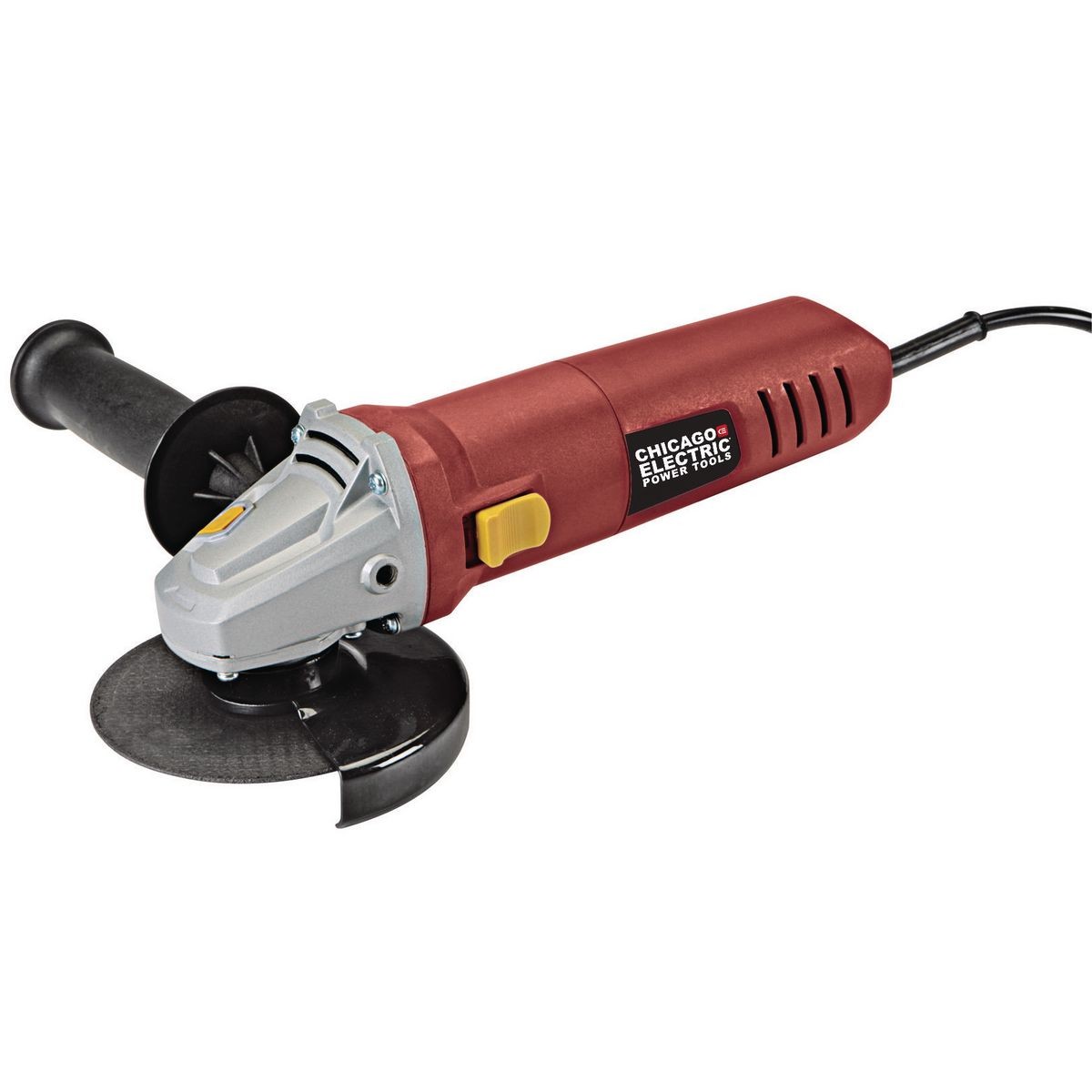
An angle grinder is basically a motor with a small circular blade attached to it. You hold a handle and use the blade without fences or guides. The blades themselves come in a lot of different styles for many different purposes and materials.
Some examples of different blades include metal cut-off discs, metal grinders, stone cutting discs, wire brushes, nylon brushes, wood sanding discs, metal sanding discs, wood carving discs, and stone carving discs.
When to Use
Angle grinders are almost a required tool if you are a welder or work with metal. They are often the best way to quickly cut metal, even if they don’t tend to be accurate. They are also very useful for general DIYers who might work with a lot of different materials since the blades can be swapped out for different purposes.
Gas Saw
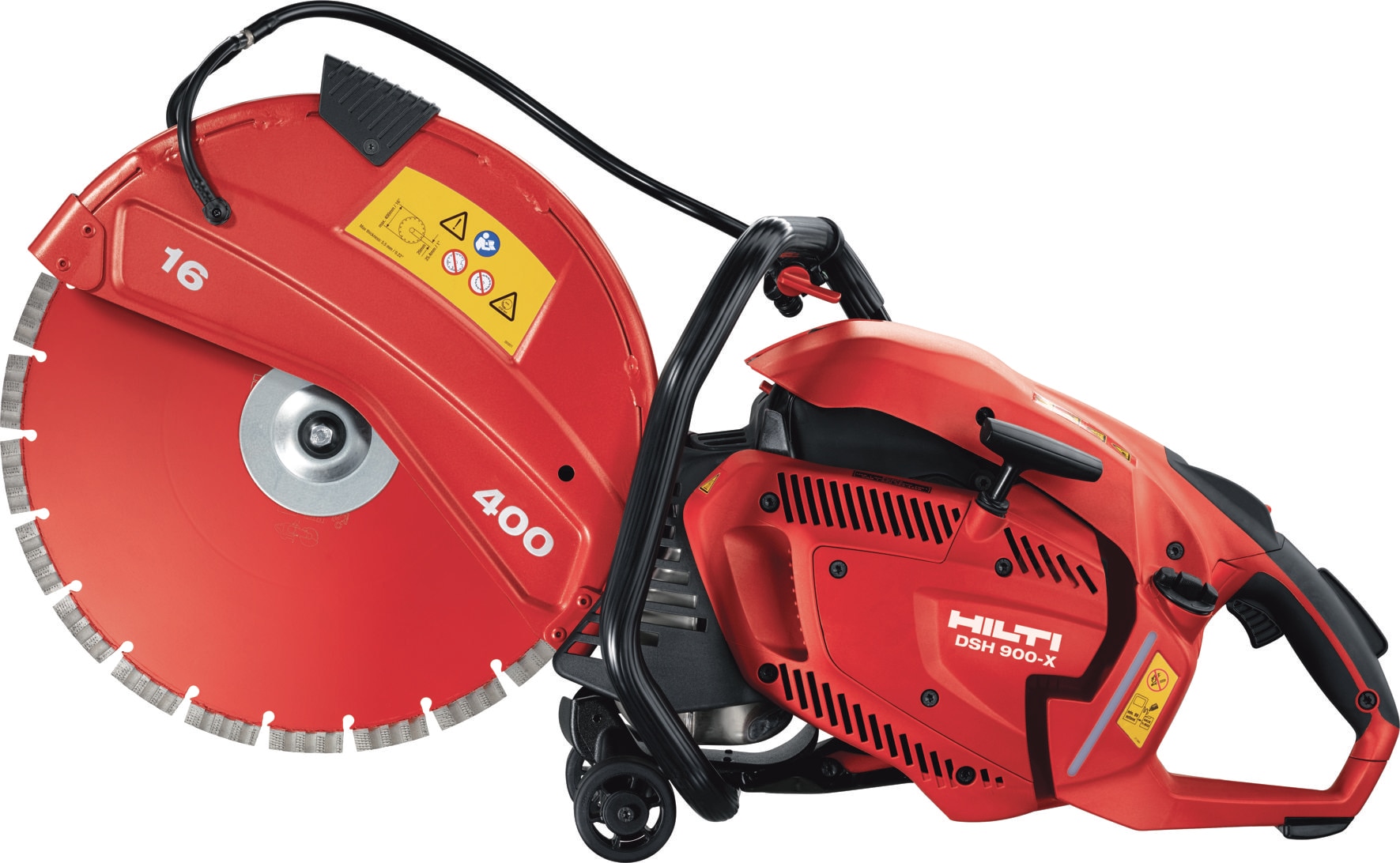
A gas saw is a very large circular saw that’s usually used for cutting concrete and stone. They are powered by a gas motor and are some of the most powerful saws you can buy. Some dedicated “soft cut” gas saws have a water spray system just like a tile saw, while others are simply dry saws and use specially designed blades that are self-cooling.
Some gas saws will have a large metal cutting blade. Those are used in construction and function like giant angle grinders.
When to Use
If you need to make cuts in concrete, this is the saw you need. Cutting a notch in a block wall or lines in asphalt is also trivial for a good gas saw.
The other place you’ll see these saws is in the back of emergency response vehicles. Since a gas saw does not need power and can cut through pretty much anything, it’s the perfect tool for cutting someone out of a car or collapsed building.
Walk-Behind Saw
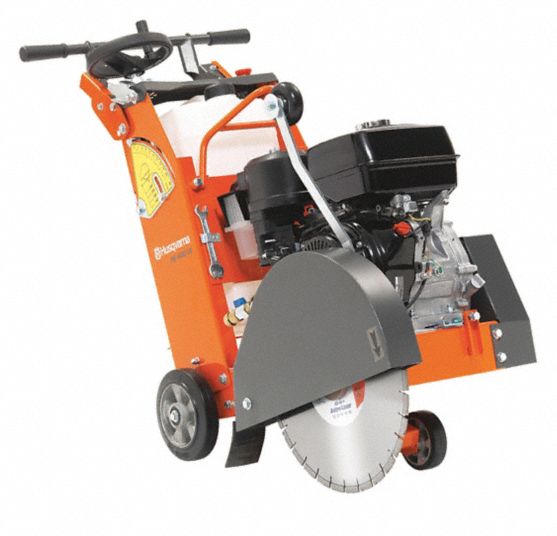
Walk-behind saws are giant gas saws that you push along like a lawnmower. A big gas saw might have a 14” blade while walk-behind saws often run 20” blades or bigger. They are used for cutting long straight lines in concrete and asphalt.
When to Use
If you are laying pipe or cutting expansion joints into a warehouse, these saws are perfect. They aren’t good for much else, but we wanted to include a highly specialized saw on this list as an example of just how crazy some of these tools can get.
Measure Twice, Cut Once
No matter what you are trying to cut, there’s a saw for the job. Choosing the right one can be the difference between seeing your project through to completion or quitting in frustration. We hope this guide helps you find the right tool to add to your collection, whether you need a humble hand saw for the occasional dovetail, or you need an industrial table saw to rip through 30 sheets a day. Just be sure to double-check those measurements; it’s easy to cut things apart, it’s a bit harder to put them back together.
